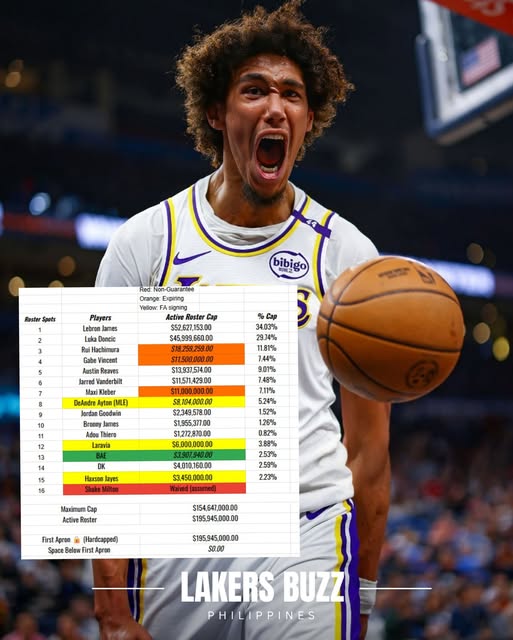The NBA offseason is always a whirlwind of speculation, strategy, and financial maneuvering, and this summer has been no different. One of the most intriguing developments has been the apparent unavailability of full mid-level exception (MLE) deals for teams like the Boston Celtics, who re-signed Al Horford to a significant contract in previous years, and the Los Angeles Lakers, who find themselves in a tight financial spot even after potential roster adjustments. The reasons behind this shift are multifaceted, involving the league’s collective bargaining agreement (CBA), team payroll constraints, and the broader economic landscape of the NBA. Understanding why full mid-level deals are off the table—for now—requires a deep dive into the mechanisms that govern team spending and the strategic decisions that front offices must navigate.
First, it’s essential to clarify what the mid-level exception (MLE) is and why it matters. The MLE is a tool designed to help teams over the salary cap sign free agents without triggering punitive financial penalties. There are different versions of the MLE, including the non-taxpayer MLE (often called the “full” MLE), the taxpayer MLE, and the room MLE, each with varying dollar amounts and restrictions. The full MLE, which was used by the Celtics to sign Horford in the past, allows teams to offer a more substantial contract than the taxpayer MLE, making it a valuable tool for adding quality rotation players. However, accessing the full MLE requires a team to stay below the “tax apron,” a financial threshold set above the luxury tax line. Crossing this apron triggers what’s known as the “hard cap,” restricting a team’s ability to add salary in various ways.
This is where the current predicament for teams like the Lakers comes into play. The Lakers, like several other franchises, are operating above the salary cap and dangerously close to the luxury tax threshold. Even if they were to waive a player like Shake Milton, whose non-guaranteed contract could theoretically free up a roster spot, it wouldn’t necessarily open up the full MLE for them. The reason is that using the full MLE would hard-cap the team at the apron, limiting their flexibility for the rest of the season. Given the Lakers’ ambitions to contend and their need to potentially make in-season moves, imposing a hard cap on themselves would be a risky proposition. Instead, they’re more likely to operate with the taxpayer MLE, which is smaller but doesn’t come with the same restrictions.
The Celtics’ situation with Al Horford is a useful comparison. When Boston initially signed Horford in 2016, they had the financial flexibility to offer him a max contract because they were under the cap. Later, when they re-signed him using the full MLE, they were able to do so because they managed their payroll carefully to avoid triggering the hard cap. But in today’s NBA, with salaries skyrocketing and the luxury tax becoming an ever-present concern, few contending teams are willing to risk locking themselves into a hard cap just to use the full MLE. The penalties for exceeding the apron are severe, including the loss of certain exceptions and the inability to sign-and-trade players, which can hamstring a team’s ability to improve its roster mid-season.
Another factor at play is the rising cost of doing business in the NBA. The salary cap has increased significantly over the past decade, but so have player salaries, meaning teams are constantly balancing their books to avoid punitive tax bills. The repeater tax, which penalizes teams that exceed the luxury tax threshold multiple years in a row, has made franchises even more cautious about their spending. For a team like the Lakers, who have frequently been in the tax in recent years, the financial implications of using the full MLE could be prohibitive. Ownership groups, even those with deep pockets, are increasingly wary of writing massive tax checks unless they’re absolutely confident in their team’s championship chances.
The current CBA also plays a role in this dynamic. The agreement between the league and the players’ association includes provisions designed to promote competitive balance, and one of the side effects is that high-spending teams are incentivized to think twice before adding more salary. The apron system, in particular, acts as a deterrent to prevent the wealthiest teams from hoarding talent by making it financially and operationally difficult to operate above certain thresholds. This is why we’ve seen a trend toward teams prioritizing financial flexibility over short-term upgrades. The full MLE isn’t gone forever—it’s still a viable tool for teams that plan their cap sheet carefully—but for contenders already near the tax line, it’s effectively off the table unless they’re willing to make significant sacrifices elsewhere.
For the Lakers, the path forward is likely to involve smaller-scale moves. The taxpayer MLE, which is projected to be around $5 million this season, could still net them a useful rotation player, but it won’t land them a difference-maker like Horford was for the Celtics in his prime. Instead, they’ll need to rely on minimum contracts, potential buyout market additions, and internal development to fill out their roster. This isn’t necessarily a death knell for their championship hopes—teams have won titles with limited financial flexibility before—but it does underscore the importance of drafting well, developing talent, and making savvy under-the-radar signings.
The broader takeaway here is that the NBA’s financial system is designed to reward careful planning and punish reckless spending. Teams that find themselves in the Lakers’ position—strapped for cash but desperate to win—are forced to get creative. The days of throwing money at problems are largely over, at least for teams already near the tax apron. Instead, front offices must weigh every financial decision against a complex web of restrictions and penalties, making the full MLE a luxury that only a select few can afford.
In the end, the unavailability of full mid-level deals for teams like the Lakers and the Celtics (should they find themselves in a similar spot) is a reflection of the league’s evolving financial landscape. The Horford-style contracts of years past aren’t impossible, but they’re increasingly rare for teams already pushing the limits of the salary cap. For now, the focus will be on smarter, more economical moves—because in today’s NBA, financial flexibility might be just as valuable as star power.



